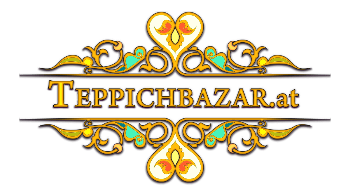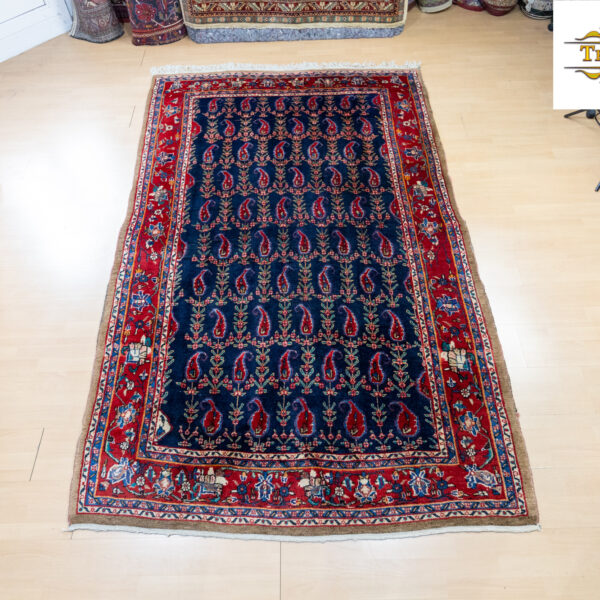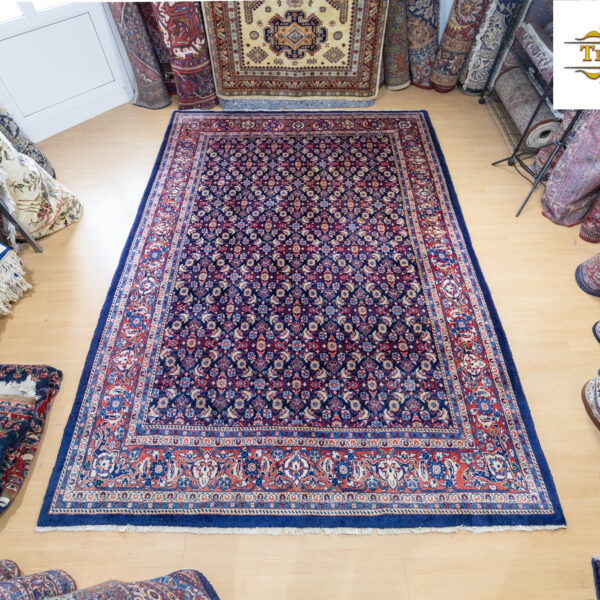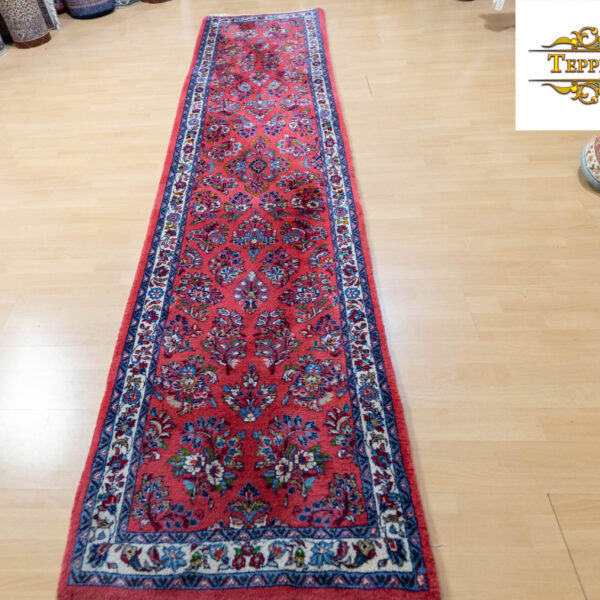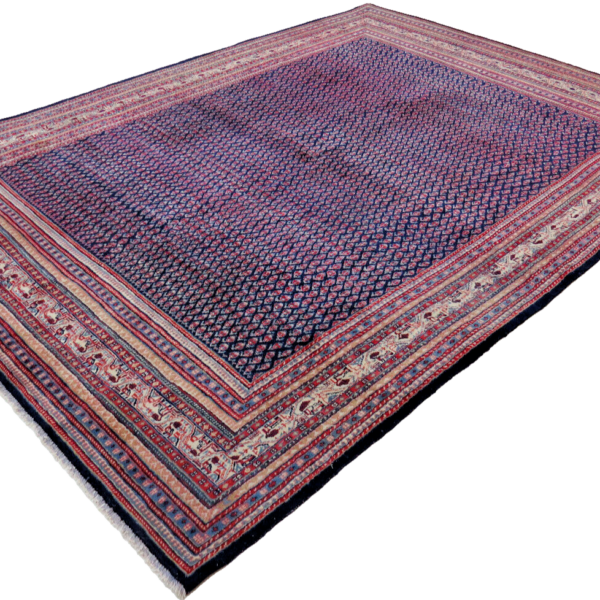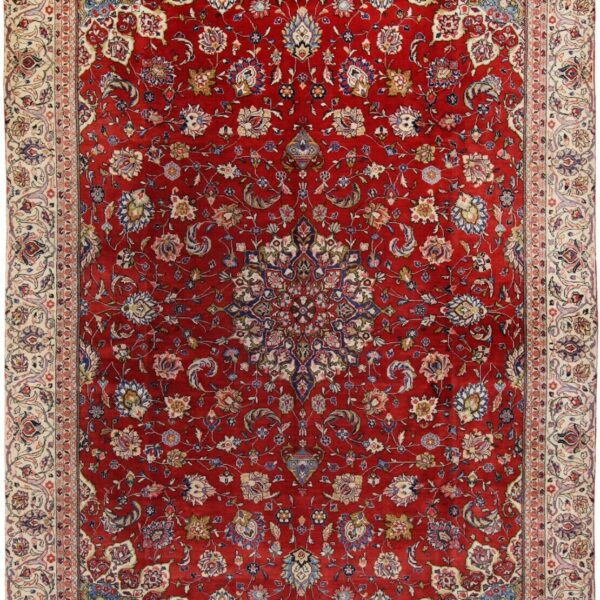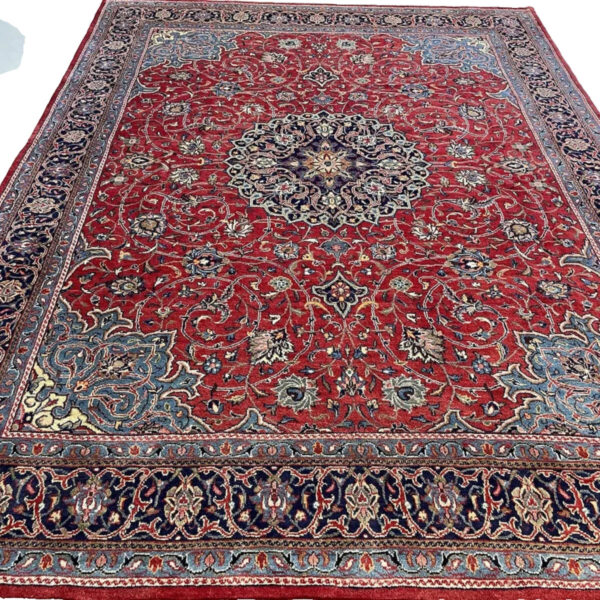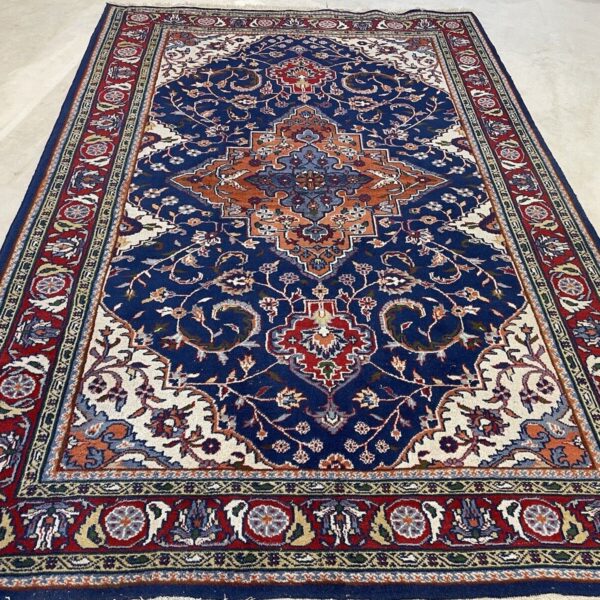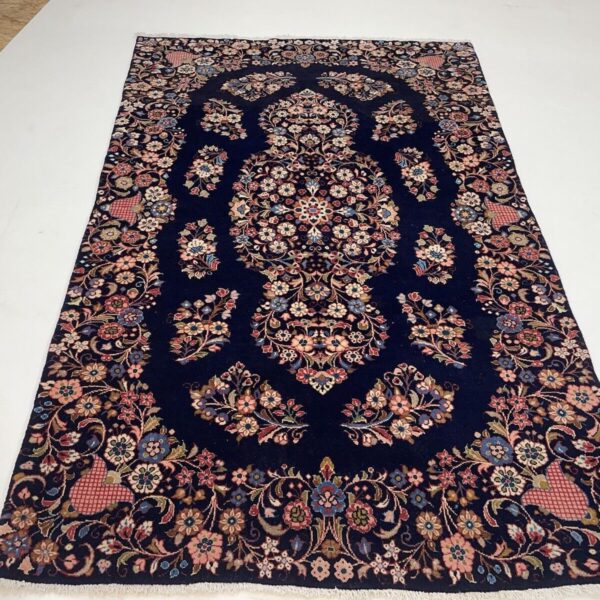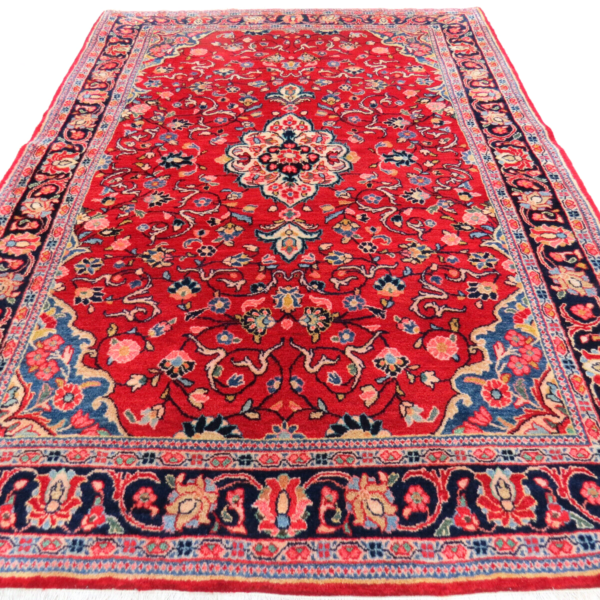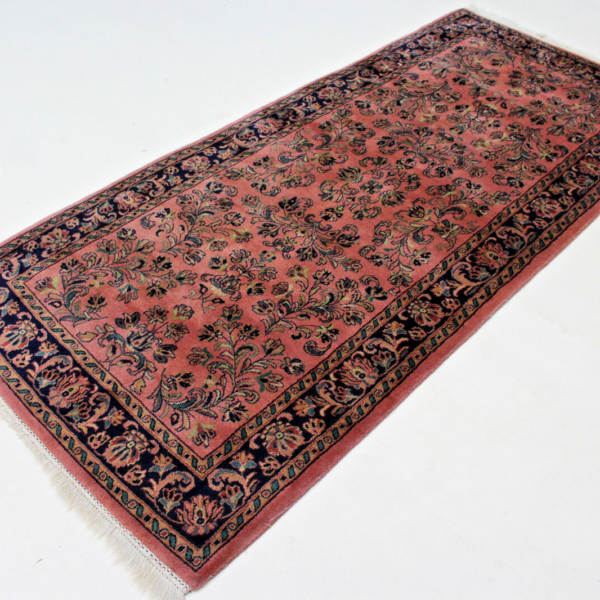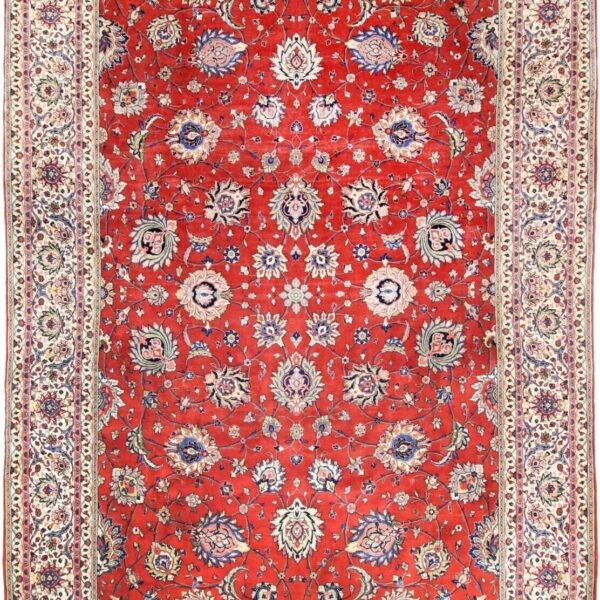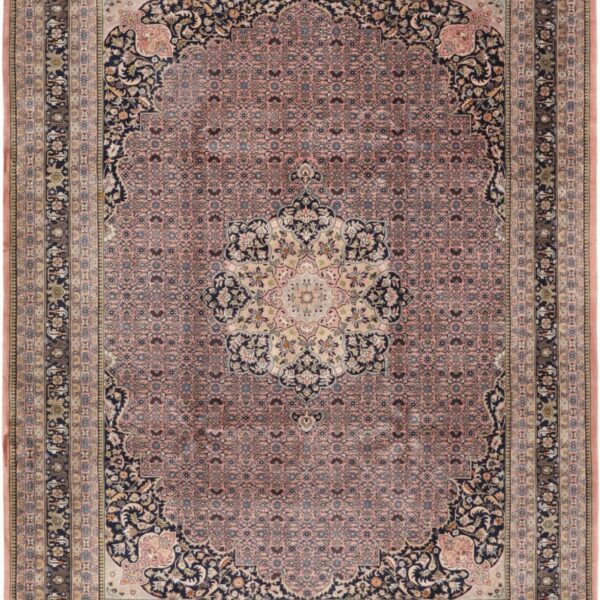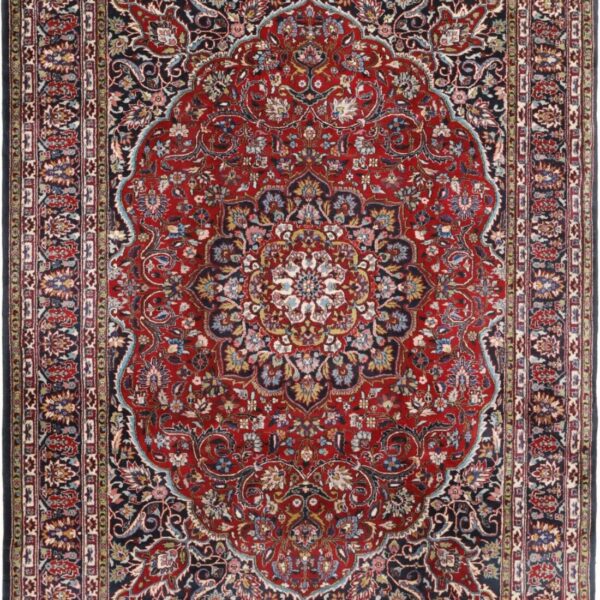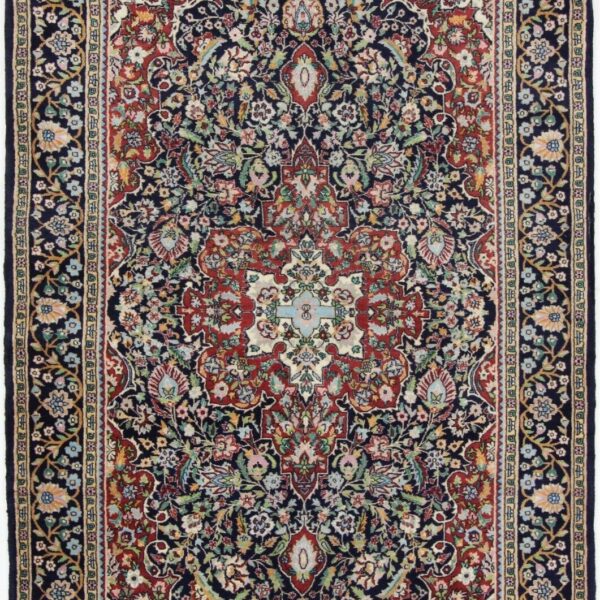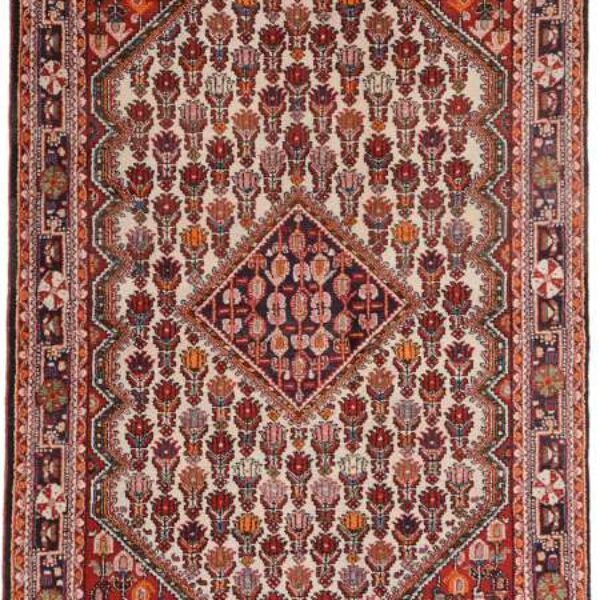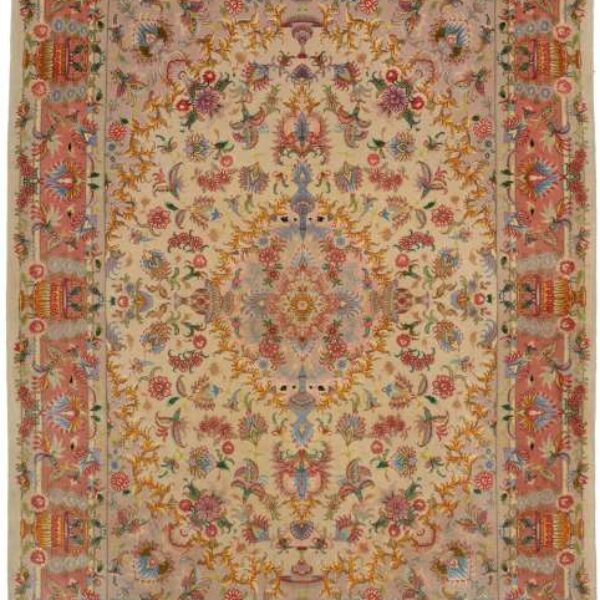Sarouk
A sarouk rug is a type of Persian rug from the Markazi province of Iran. Sarouk rugs (also saruk or sarough) are woven in the village of Saruk, as well as in the town of Arak and the surrounding countryside.
Persian carpet market
Sarouk rugs were made for much of the 20th century. The first successes of the Sarouk carpet are mainly due to the American market. From the 1910s to the 1950s, the "American Sarouk", also known as the "Painted Sarouk", was produced.
American customers had an affinity for the curvilinear and floral designs of the sarouk. What they didn't like was the color, so in the 1920s, 1930s, and 1940s, carpets exported from Iran were dyed a deep, coveted raspberry red upon arrival in the United States. In the second half of the 19th century, a huge market for Persian rugs developed in Europe and the United States. Many traders bought the old and antique Persian carpets from all over Iran and exported them to other countries. They used the city of Tabriz in northwestern Iran to export these antiques to Europe via Erzurum in Turkey. Some traders also used the ports of the southern Persian Gulf to export Persian rugs to the United States by ship.
workshops set up
In the last decades of the 19th century, probably around 1880, the supply of these beautiful antique carpets from Persia was rather small. Therefore, many Tabriz merchants decided to set up workshops in Sultanabad to produce carpets for the western market. This region had a beautiful tradition of carpet weaving and was a perfect place to set up looms and carpet workshops. Sarouk is a village located 30 miles north of the city of Sultanabad (now Arak). Sarouk is famous for weaving very heavy body mats.
Growing demand
To meet the growing demand for Persian carpets in the West, the Anglo-Swiss company Ziegler & Co. opened offices in Tabriz in 1878 and in Sultanabad in 1883. The first world exhibition for oriental carpets in Vienna in 1891 and another in London in 1892 created a growing demand for Persian carpets in the West. Companies such as the Anglo-Italian brothers Nearco Castelli and the Eastern Rug Trading Company from New York established their branches in Tabriz in 1909 and later in Kerman. The Atiyeh Brothers of Oregon also set up their weaving mill in Kerman after the turn of the 20th century.
Sarouk style
Of these cities, Sultanabad and its surrounding towns and villages such as Sarouk, Farahan and Lilihan were the most famous in the United States. After the establishment of offices and branches of foreign companies, designs were created according to the tastes and requirements of customers, and new types of Persian carpets were produced. The type of rug now called Ziegler or Sultanabad was made with the patterns and color combinations that Americans loved as early as the early 20th century. There are many called the American Sarouk. Their colors resemble dark or dirty pink. They have generic designs with no medallion or a very small floral medallion.
Sarouk rugs are still made today using the same methods as when production began, with the exception of the post-production dyeing work. Known for their exceptional quality and their ability to withstand decades of wear and tear, Saroughs continue to be top sellers. They're made from high-quality, durable wool with a Persian knot.[1] A telltale sign of a sarouk is usually its blue wefts, its salmon or tomato red color mixed with ivory and blue, and a very traditional floral style. The finest modern sarouk rugs come from the small town of Ghiassabad.
